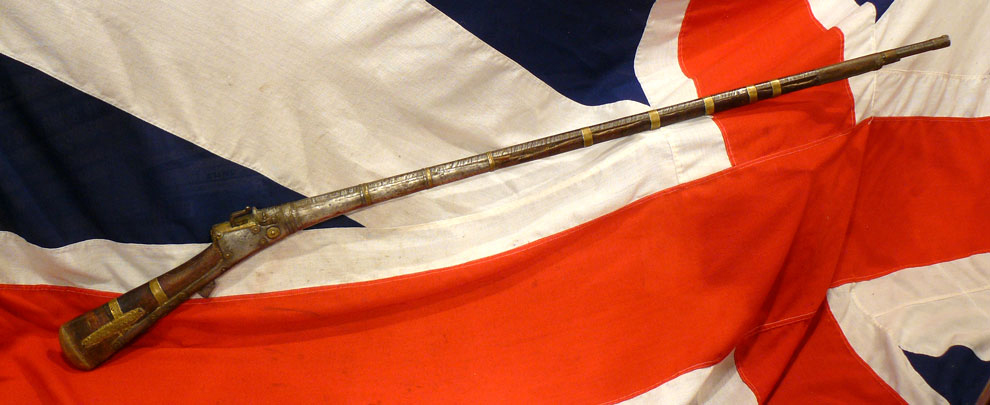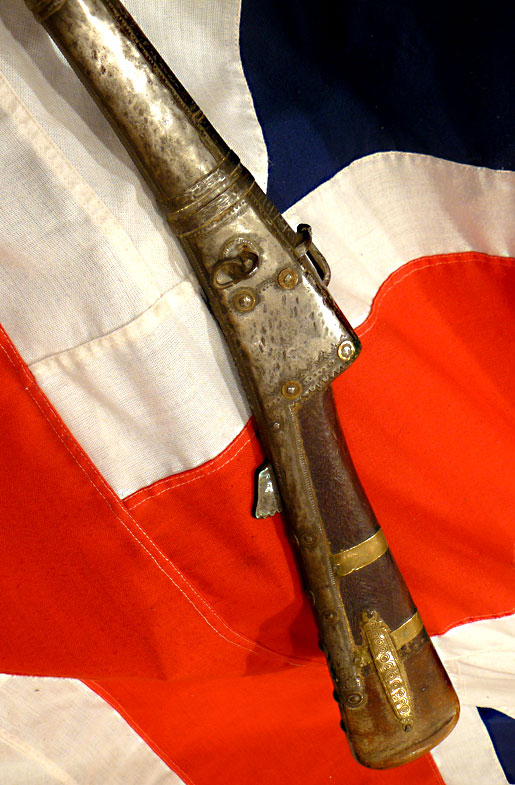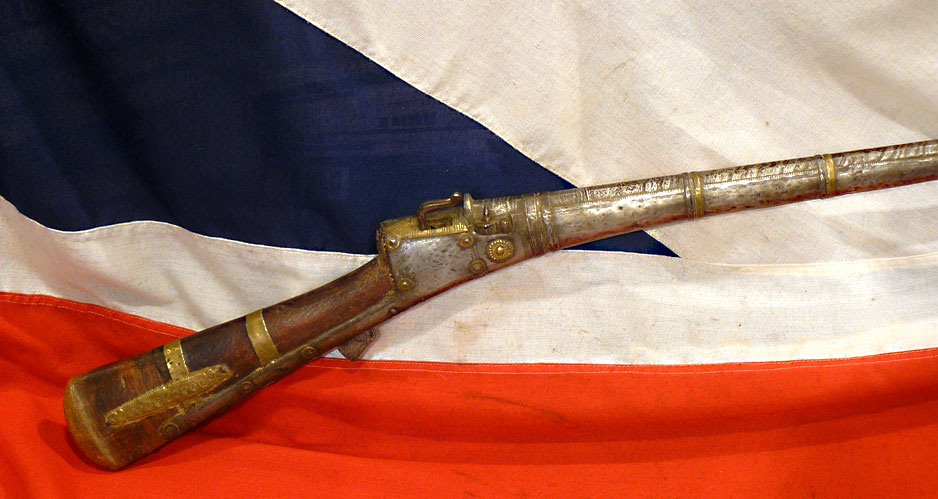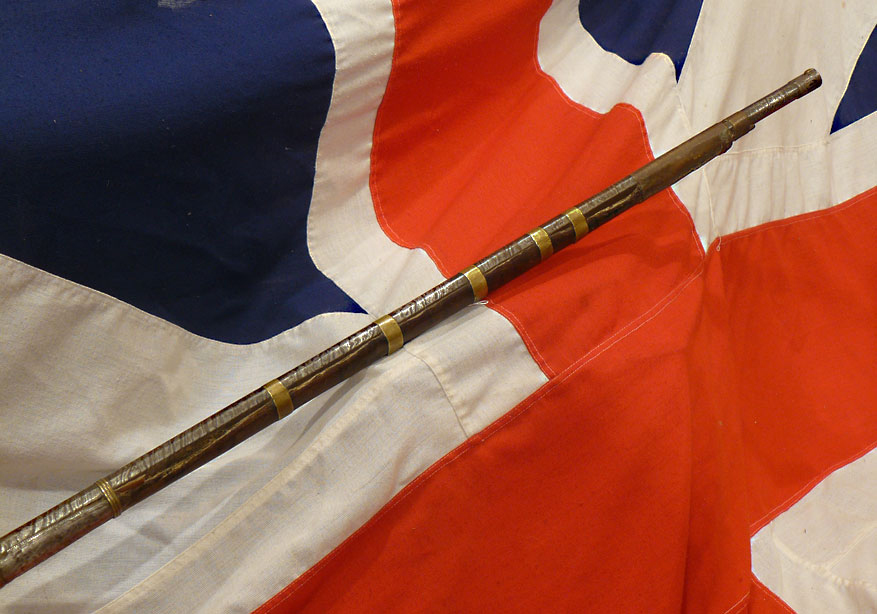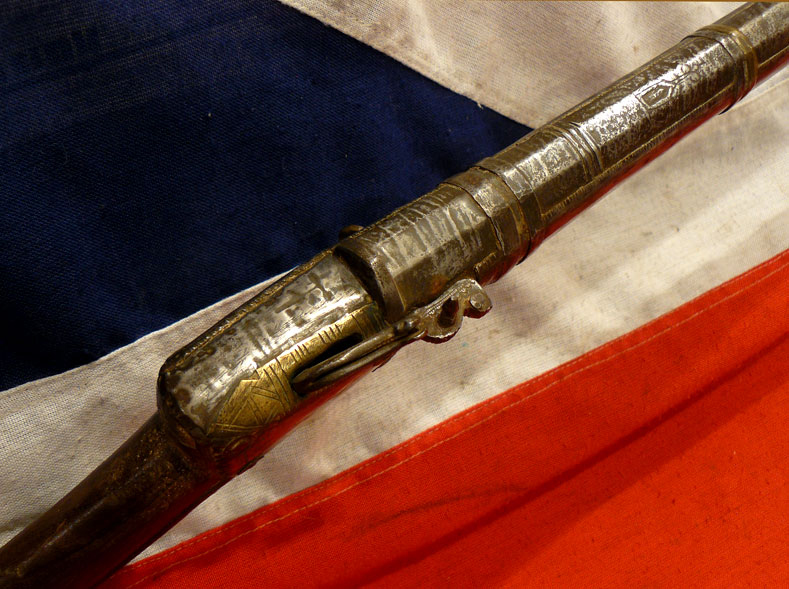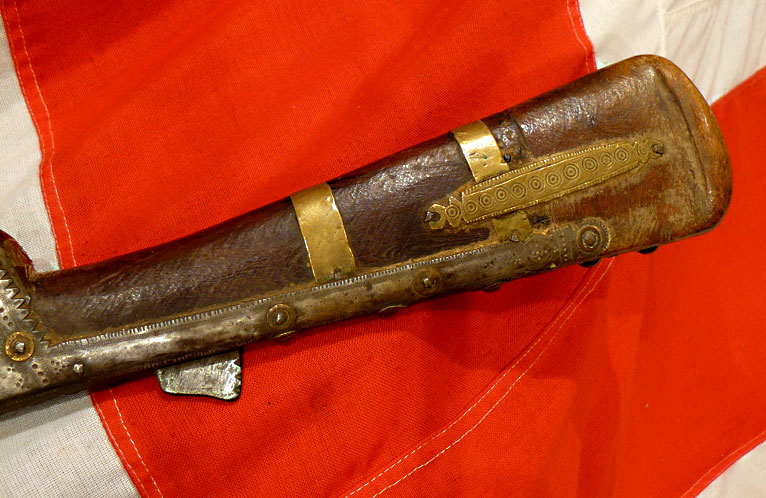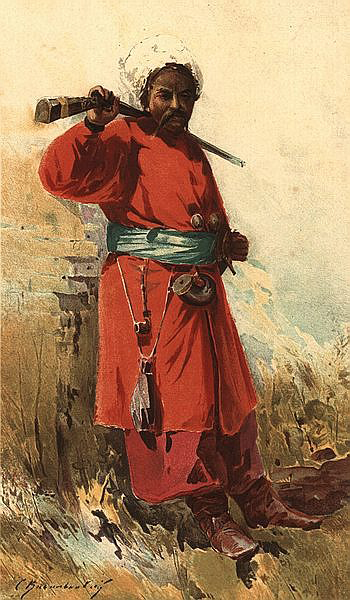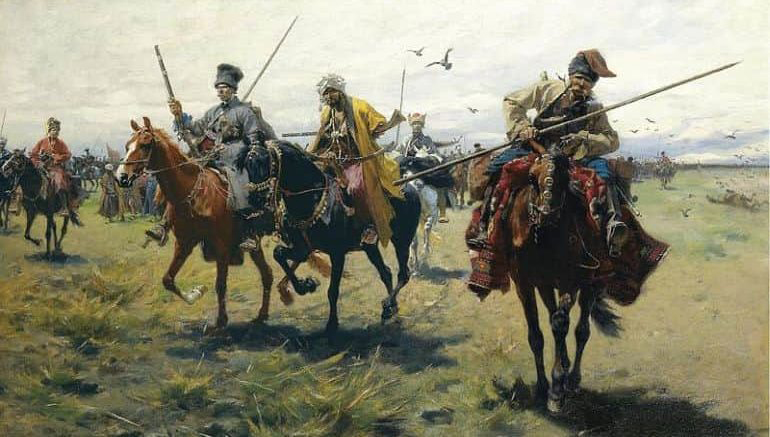A Spectaular Looking, Rare & Super Example of a 17th -18th Century Matchlock Musket
A rare, antique 17th century Turkish Ottoman Empire matchlock musket. The musket has an octagonal Damascus steel barrel struck with the makers mark, and a figured Circassian walnut stock extensively banded in brass. Only a few Ottoman matchlock muskets of this type survive in Turkey, most can be seen outside of Turkey at museums in Poland and Ukraine as the muskets were taken from the Turks as booty by the Poles and the Cossacks during the 17th century wars with the Ottoman Empire.
Similar guns are published in the Turkish catalogue of Ottoman Firearms at the Askeri Military Museum Harbiye Istanbul. " Askeri Muze Osmanli Ve Cumhuriyet Donemi ATESLI SILAHLAR katalogu"by Aysel Cotelioglu.
These types of Turkish guns were very popular and widely used by Zaporozhian and Don Cossacks during the 17th century. The Zaporozhian Cossacks, Zaporozhian Cossack Army, Zaporozhian Host were Cossacks who lived beyond the rapids of the Dnieper River, the land also known under the historical term Wild Fields in today's Central Ukraine. Today much of its territory is flooded by the waters of Kakhovka Reservoir.
The Zaporozhian Sich grew rapidly in the 15th century from serfs fleeing the more controlled parts of the Polish?Lithuanian Commonwealth. It became established as a well-respected political entity with a parliamentary system of government. During the course of the 16th, 17th and well into the 18th century, the Zaporozhian Cossacks became a strong political and military force that challenged the authority of the Polish?Lithuanian Commonwealth, the Tsardom of Russia, and the Crimean Khanate.
The Host went through a series of conflicts and alliances involving the three powers, including supporting an uprising in the 18th century. Their leader signed a treaty with the Russians. This group was forcibly disbanded in the late 18th century by the Russian Empire, with most of the population relocated to the Kuban region in the South edge of the Russian Empire. The Cossacks served a valuable role of conquering the Caucasian tribes and in return enjoyed considerable freedom granted by the Tsars. As with all our antique guns, no license is required as they are all unrestricted antique collectables
Code: 22112
2450.00 GBP

